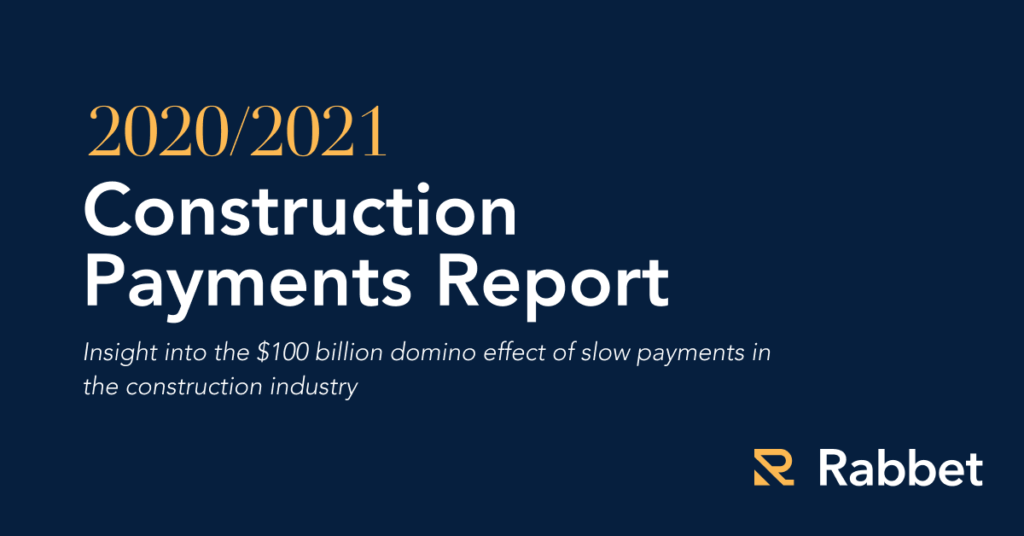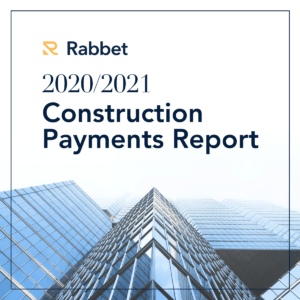
The 2020 Construction Payments Report, exploring the rapidly accelerating costs associated with slow payments in the construction industry, is now available.
Based on a survey Rabbet conducted in September 2020, general contractors and subcontractors estimate that the cost of floating payments for wages and invoices represents $100 billion in excess cost to the industry, a 56% increase from the cost reported in 2019. Findings indicate those costs are passed on to real estate developers and financiers in the form of higher bids from contractors and project delays.
To compile the data, Rabbet distributes a survey each year to general contractors and subcontractors representing a diverse set of trades. This year’s report captures how 99 survey respondents across the U.S managed working capital, bidding decisions, and project risks in the face of slow payments during the last 12 months. The data from 2020 was then compared to data collected in prior years.
Key findings include:
- 25 percent of all respondents reported that work has been delayed or stopped due to a delay in payments to crew members in the last 12 months.
- 41 percent of subcontractors chose not to bid on a project due to a general contractor or owner’s reputation of slow payments in the last 12 months.
- 69 percent of subcontractors would offer a discount for payments within 30 days, resulting in an estimated industry-wide savings of $80 billion.
Want more insights? Download the full report here.
“This year has brought on unprecedented changes across the world and unfortunately those changes have led to a severe degradation in payment cycles in construction that impacts not just contractors, but developers and financiers as well.” said Will Mitchell, CEO of Rabbet. “The repercussions of these changes are only starting to be seen, but many small businesses have already failed and cash flow consistently remains an issue for subcontractors and contractors. Luckily, many firms are starting to look to technology to solve these issues in order to make sure these businesses survive and we remain hopeful that this adoption will lead to even better payment cycles in the near future, which ultimately reduces cost for all stakeholders on a project.”
The report revealed substantial increases in both subcontractors and general contractors relying on savings to float payments. The percent of subcontractors relying on retirement savings increased 183% and over 75% of general contractors supported faster payments for subcontractors. These results support findings from the 2020 State of Construction Finance Report where 70% of real estate developers and construction lenders reported seeing room for improvement when it came to the efficiency of their construction finance processes.
Ultimately the cost of slow payments isn’t slowing down, and inefficiency is adding time, money, and risk to developers’ construction projects.
To view the complete 2020 Construction Payments Report, click here.















